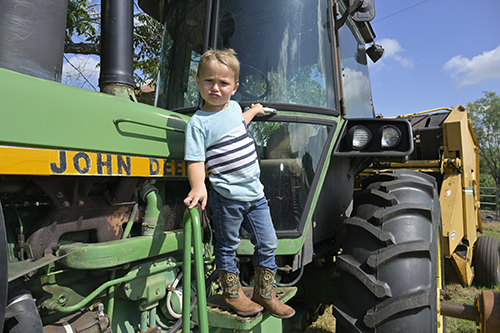 In November of 2017, Anna and Stephen Heimbecker found out their family was growing by two tiny feet. They never anticipated just how tiny those feet would be.
In November of 2017, Anna and Stephen Heimbecker found out their family was growing by two tiny feet. They never anticipated just how tiny those feet would be.
When Anna visited her OB-GYN in San Angelo, Texas, for her 20-week sonogram, the physician noticed the baby was much smaller than she should be.
Anna’s obstetrician referred her to a fetal maternal specialist who revealed the baby was suffering from severe intrauterine growth restrictions. Anna’s doctor decided it would be best that she visit a tertiary care center and gave her several options to choose from. The Heimbecker family chose Dr. Richard Wagner, chief of clinical operations for the Department of Obstetrics and Gynecology at The Children’s Hospital of San Antonio.
On May 4, Anna visited the labor and delivery triage at The Children’s Hospital for a few tests. Results revealed elevated levels of protein, a sign of pre-eclampsia. Anna stayed overnight as a precaution.
 The next morning, Dr. Wagner performed a sonogram to check on baby Heimbecker. The baby had developed a pericardial effusion, an excess of fluid between the heart and the sack surrounding the heart. Knowing both mom and baby’s lives were at risk, Dr. Wagner braced the family for what would possibly be an extremely early delivery. Anna had a final blood pressure reading of 140/90, automatically meeting the risk of pre-eclampsia. Doctors immediately took Anna into surgery for a C-Section delivery.
The next morning, Dr. Wagner performed a sonogram to check on baby Heimbecker. The baby had developed a pericardial effusion, an excess of fluid between the heart and the sack surrounding the heart. Knowing both mom and baby’s lives were at risk, Dr. Wagner braced the family for what would possibly be an extremely early delivery. Anna had a final blood pressure reading of 140/90, automatically meeting the risk of pre-eclampsia. Doctors immediately took Anna into surgery for a C-Section delivery.
Katherine Grace Heimbecker made her entrance into the world on May 7, 2018 at 25 weeks gestation, weighing only 11.9 ounces.
The moment her daughter was removed from the uterine sack, Anna recalled, “This tiny little baby whose lungs are not yet formed, just whimpered and gave us a big sign the moment she was born, that she was a fighter.”
Dr. Maria Pierce, Katherine’s neonatologist, was able to intubate her immediately after delivery and her heart rate began to improve.
Although she was 1/10th the weight of an average 7.5-pound newborn, Katherine had no life-threatening health issues as doctors had previously anticipated.
The Children’s Hospital of San Antonio includes a level IV Neonatal Intensive Care Unit (NICU), the highest level of care available for premature and critically ill infants, where Katherine received around-the-clock care.
Katherine remained in the NICU at The Children’s Hospital of San Antonio for five months to continue growing. Despite a small nasal passage on one side, she was discharged home without needing oxygen therapy.
 “It was all divinely orchestrated. Everyone at the hospital rose up and helped us bring our baby girl home,” said Stephen.
“It was all divinely orchestrated. Everyone at the hospital rose up and helped us bring our baby girl home,” said Stephen.
Katherine’s time at The Children’s Hospital of San Antonio was in no way easy for the family, but with the help of an incredible staff of nurses, doctors, residents, and your generous donations, she is now a happy and thriving baby, well on her way to catching up to her big brother and biggest supporter, Jackson




